With the steady rise of deaths in the swim leg of triathlon, I’d been asked by a number of people about my thoughts around the Swim It. I even wrote a rather long op-ed post on it a while back.
Well, a few weekends ago I took the opportunity at a lake to try out the Swim It product (sometimes also referred to as My Swim It). This device is designed to strap on your leg during an openwater swim. It then features a red handle that you can pull in case of emergency, which in turn inflates a life jacket. The idea behind it is to offer a safety mechanism/blanket for swimmers in trouble, as well as increase visibility (and speed rescue) for those same individuals once inflated.
The device has USAT (USA Triathlon) and WTC (World Triathlon Corporation) approval, and thus is permitted in all Ironman branded events (WTC) and USAT (just about everything else in the US) sanctioned events. If the device is triggered though, the user would receive a disqualification (DQ) though, due to using an inflation device on the swim leg (which are banned).
My goal was to not only swim with it an understand how it felt in the water, but also to trigger and inflate the device and allow you to see how that all works. So with that brief background out of the way, let’s dig into it.
Unboxing:
Perhaps the easiest unboxing of all things I’ve ever done. The unit comes in a clear plastic shell that simply pops open.
No nasty sharp plastic war wounds here (likely done purposefully to limit accidental puncture of the jacket):
Inside you’ll find exactly two items: The Swim It itself, and a sheet of paper telling you how to use it. Here’s the paper first (keeping the more exciting item for second):
And here’s the Swim It itself:
Yup, that’s all there is inside the box. Simple and straight forward.
Installation/Configuration:
As you can see below, the Swim it has two large Velcro straps that allow you to wrap it around your upper leg.
Additionally, it has a plastic red handle. The red handle is what you pull when you want to trigger the unit to inflate:
With that, you’ll go ahead and wrap the two large straps around your leg. It’s pretty straight forward, and the straps are pretty sturdy and tight. When all is said and done, you want the little red handle on the side or back of your leg. Essentially, you want it in an accessible place.
It’s alright, you can continue checking out my wetsuit clad rear.
Ok, checking out time is over.
Use while Swimming (pre-triggering):
Many folks have wondered weather or not you’d feel significant drag while wearing the Swim It. In my testing, I just didn’t notice it. Perhaps it was because I’m not a world class swimmer, or perhaps it was because the drag in that area is somehow minimized due to position of your body and the unit.
In addition, there’s been a lot of concerns about the likelihood of the unit going off in a triathlon with a mass swim start. In other words, someone else accidentally pulling the wearers cord and triggering an inflation. This could certainly happen, but it’s actually a bit harder than it looks. You’d have to have your hand in such a position to actually grab that handle and pull it with a sustained tug. Not brush it. Not glance it, but literally grab, hold, and pull.
No doubt it’ll eventually happen. Even a 1% trigger rate in an Ironman would be 20+ people (if everyone had one on them). But, I just don’t see it happening that often.
Which then goes to the question of would it be a hindrance to other races – something I myself was concerned about it previous posts.
Put quite simply: Not a chance.
As you can see in the videos below, the lifejacket isn’t much bigger than your head. It would likely actually reduce the radius of an adult swimmer who may have been flapping their arms around like an airplane, to one who’s simply floating there. Plus, as any triathlete will tell you – there’s endless numbers of folks who stop and float midway through races (for all sorts of reasons, valid and otherwise).
And finally, would there be confusion with a course buoy (again, should it be triggered). As you can see in the videos, the visibility of the lifejacket is minimal at best. Even in the roughest triathlons I’ve been in out in the open with solid wave action and no visibility access, I wouldn’t have confused this for another swimmers swim cap, before a buoy.
Of course, if it does inflate, it’s an automatic DQ. But, in most cases, that shouldn’t be your primary concern. If it does accidentally inflate in some other scenario, then you’d be stuck swimming back with it. Which while it does have a bit of drag, it’s not too bad.
Use during emergency (triggering):
Ok, here comes the time you’ve all been waiting for – actual trigging of the unit.
I’ve put together two videos. The first video is at the lake with me in the water a ways out. I did this because I wanted you to see what it was like from a distance – to understand visibility scenarios.
In this first video, I swim a few strokes like normal, and then you’ll see me wave (simulating me in distress) and then I’ll trigger the unit. Now, what was somewhat unexpected is that I somehow managed to take a solid 7-11 sized big gulp of water at exactly the start of triggering it. Thus, you hear me coughing like I’m about to die. For better or worse, this probably helped enhance the video. With that, watch the video carefully – and note the captions. Enjoy!
Ok, first video complete. The key lesson points here were that it wasn’t as easy as I thought to pull it on over my head. Secondly, it popped up all semi-tangled. Thus, it cost me a bit of time to get untangled. And third, try to avoid choking when shooting videos that thousands of people will watch.
This is the primary reason I strongly believe that if you use the Swim It, you should test using it first somewhere to understand exactly how it works, and what to expect in an emergency. The above was the first time I’d use the product, and knew nothing about how it would work beyond reading the little manual on the back and watching the YouTube videos a bunch of times. In a true emergency, it needs to feel like auto-pilot. Any hindrances to that will likely lower its success rate.
With that, let’s get into the second video, which I simply shot on dry land. In this video, I wanted to allow you to see exactly what the unit looks like as it’s inflating. I didn’t quite have enough foresight to shoot it with any form of high speed camera modes, so I slowed it down a bit in post-processing as part of the video (repeated a second time).
Also of note is that if the unit doesn’t inflate automatically (either fully or partially), then you can go ahead and manually inflate it via the red valve on front:
You can see the red valve below as well:
Re-Use/Deflating/Re-Packing:
As I’ve noted above, I don’t believe the Swim It should be used unless you’ve tested it out at least once and understand how it works. Thus, in doing so – you’d want to understand how to repack the unit. Of course, you can also send it back to them and they’ll do it for you. But it’s silly easy, as I’ll show you. And all it takes is a simple CO2 Cartridge (just like you use for your bike).
So I pedaled over to the bike shop and picked up a pack of 16g CO2 cartridges, which is the size specified for use with the Swim It. If you pick up a small cartridge, it won’t inflate it fully. Normally you’ll find these for about $2-4 at most bike shops. Here in France, they cost me a wee bit more.
With that, it’s time to pack it up. Now, I’m not going to walk step by step through the packing process – because I’d rather you watch their video on it. It’s a lifesaving device after all, so it’s best to watch their precise steps. No worries, it’s basically just like folding a paper airplane, combined with stuffing a sleeping back into its storage bag.
Once that’s all set, you’re ready to go. One important note however is to ensure that you’ve got the little red handle on the correct side of the additional Velcro strap. Otherwise, when you pull the handle, it won’t actually trigger the unit. I found this out the hard way while doing my demo video above (edited out so that I don’t reduce my smoothness factor).
With that, you’re ready to go for another swim. Or just practice inflating it for fun. Your choice.
Final thoughts (the important part):
I’ve never given a product a grade before. Never even a specific rating. Instead, I prefer to talk about features, functionality, gaps, competitors and the such – and let you decide whether or not it’s the right product for you. But this time, I’m going to make an exception.
In the category of “will it save your life” – I give it a grade of C+.
At the end of the day, that’s the ONLY reason you’d buy this device – to save your life. And there’s a chance it will do that, but there’s also a chance it won’t.
First, the Swim It itself won’t likely save you once any form of cardiac event has begun. That requires being very close emergency personal who can do something about it. No doubt that just this year triathlon is full of cases where emergency personal were literally there within seconds to help the victim – but still couldn’t save them (even at the finish line of some running races). There’s many factors involved in openwater, but the most obvious is due to the difficulty in trying to save people in the water, communications with/to/from kayakers, and distance back to medical units.
Second, as you saw in the video – you MUST test it out first once before using it for real. I wasn’t having a cardiac event (but did manage to swallow more water than desired at the same moment), and still found it popped out in a confusing way, and didn’t go over my head as expected. No doubt that if I were to try it again, I’d probably master it much quicker this second time. I now know that it’ll take a hard pull over my head. I now know that it’ll pop-up weird. You have to train your body to react to the device, just like any other training simulation.
In short, if you buy it, but don’t use/test it before hand – I’d really ask you not buy it at all. Because in a legit time of emergency, you’re likely not going to have the mental forethought/availability to figure it out.
It’s potentially likely that wearing the Swim It may trigger something in your brain that tells you that you’ve got this safety blanket, and thus reduce panic attacks. Which in turn might reduce triathlon deaths. There is likely some portion of triathlon swim deaths that can be prevented with this. I just don’t think anyone can reasonably quantify what that is today. Nor, anytime in the immediate future – there’s simply too many variables that exist from family history to current athletic fitness to unknown other triggers.
Now, if you’ve tested it out once, and understand how to use it. I see no harm in wearing one. The hydrodynamic losses are likely negligible for all but the fastest of the front of the pack swimmers. And I don’t see much likelihood of accidental triggering of the device, simply based on the awkwardness and sharp pull required by someone else to pull the red handle. It’s just unlikely, even in a mass swim start.
I think this device definitely has a valid use, and is worthy of purchase for certain folks – but it shouldn’t be a replacement for proper openwater swim training, nor assumed to be something that would save you in the case of cardiac related events.
As always, if you have any questions – feel free to drop them below. And thanks for reading!
FOUND THIS POST USEFUL? SUPPORT THE SITE!
Hopefully, you found this post useful. The website is really a labor of love, so please consider becoming a DC RAINMAKER Supporter. This gets you an ad-free experience, and access to our (mostly) bi-monthly behind-the-scenes video series of “Shed Talkin’”.
Support DCRainMaker - Shop on Amazon
Otherwise, perhaps consider using the below link if shopping on Amazon. As an Amazon Associate, I earn from qualifying purchases. It doesn’t cost you anything extra, but your purchases help support this website a lot. It could simply be buying toilet paper, or this pizza oven we use and love.

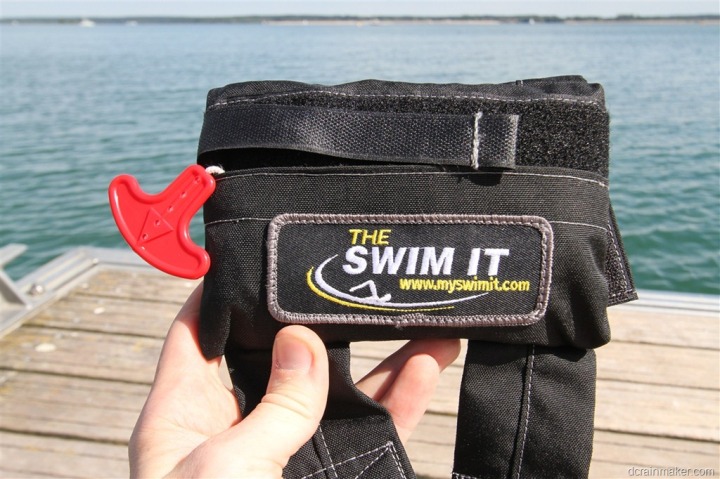
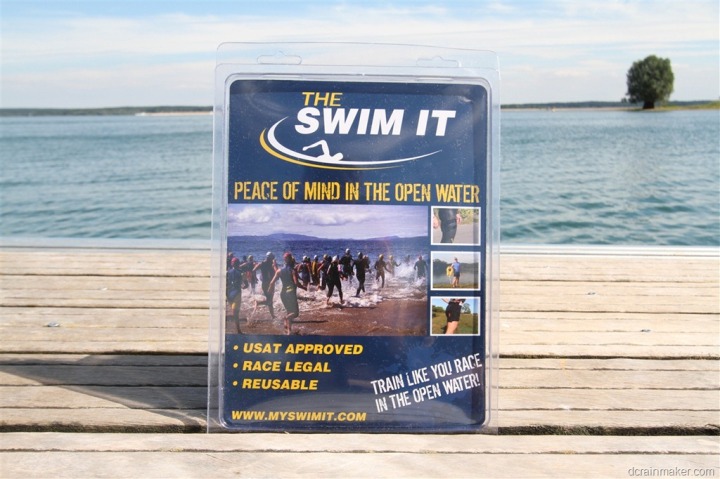
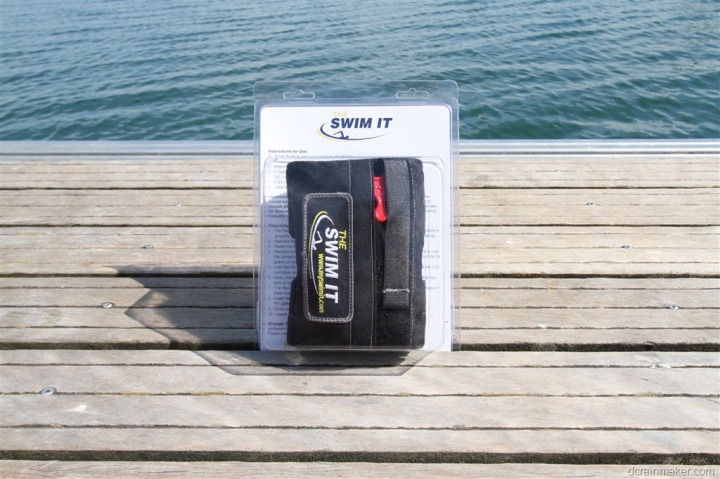
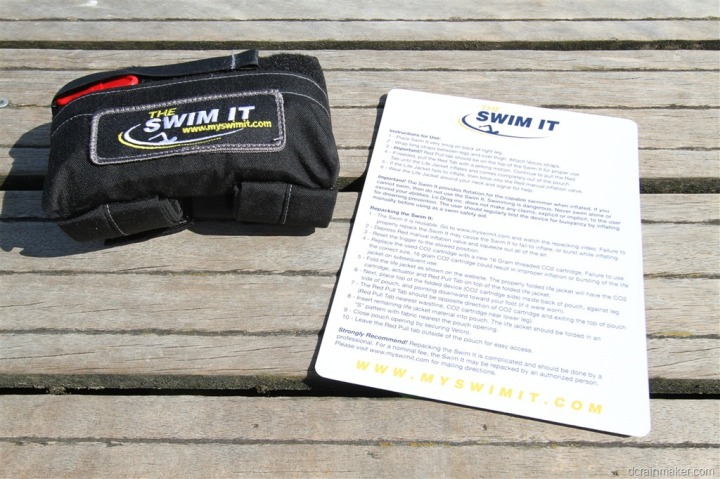
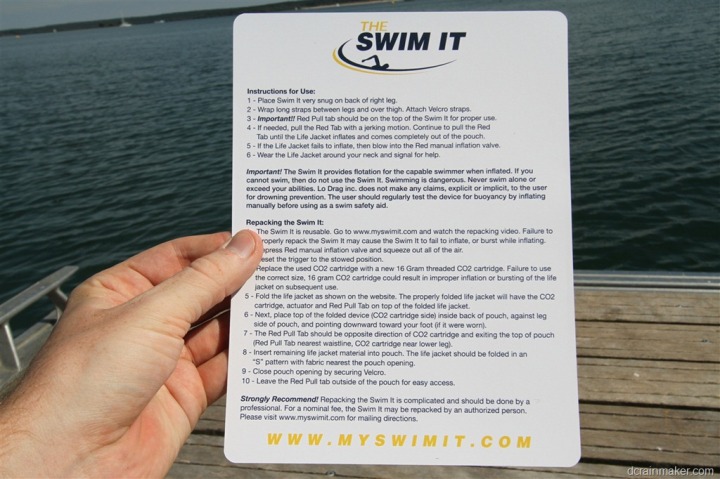
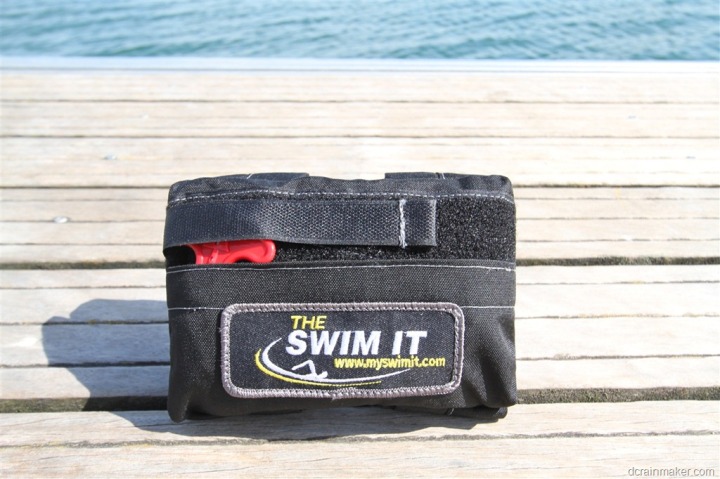
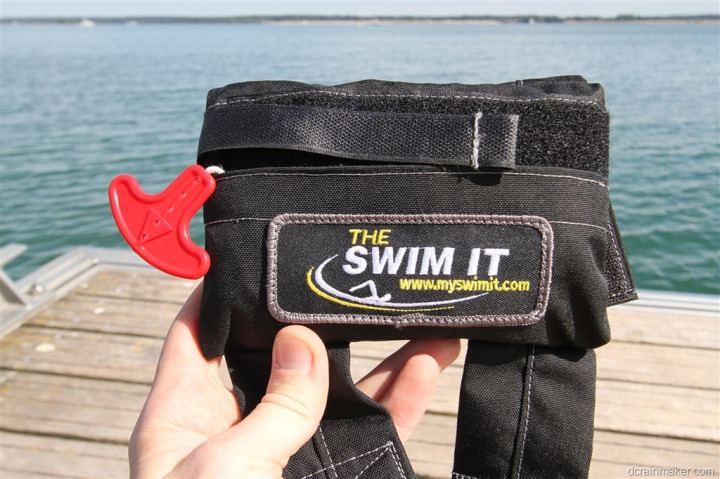
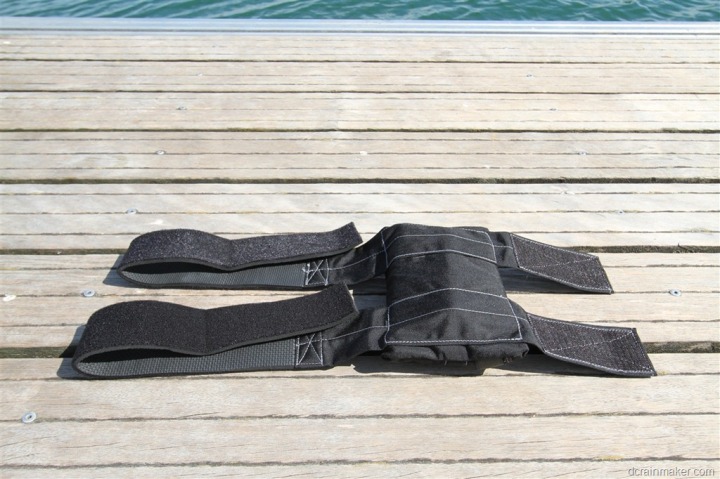
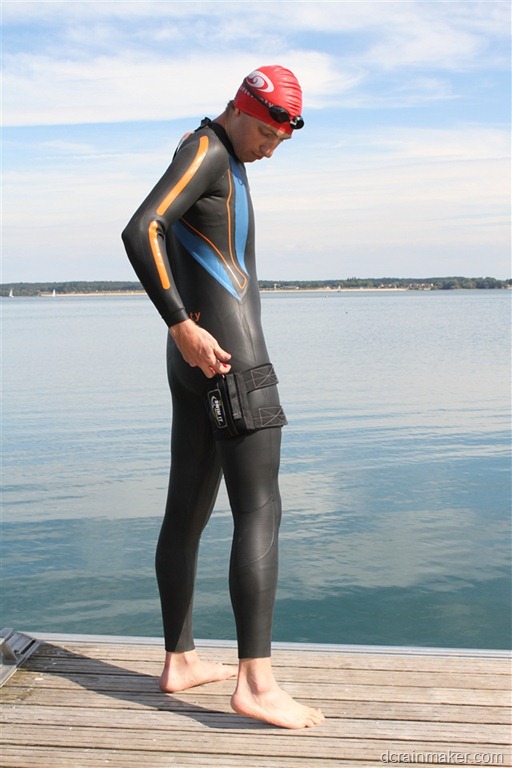


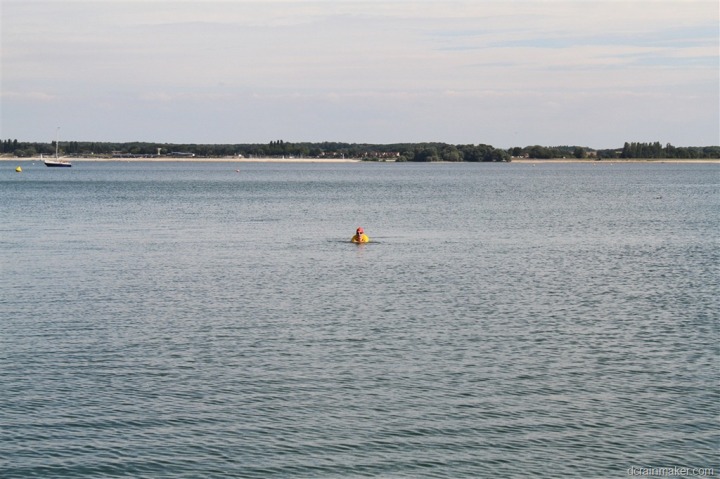
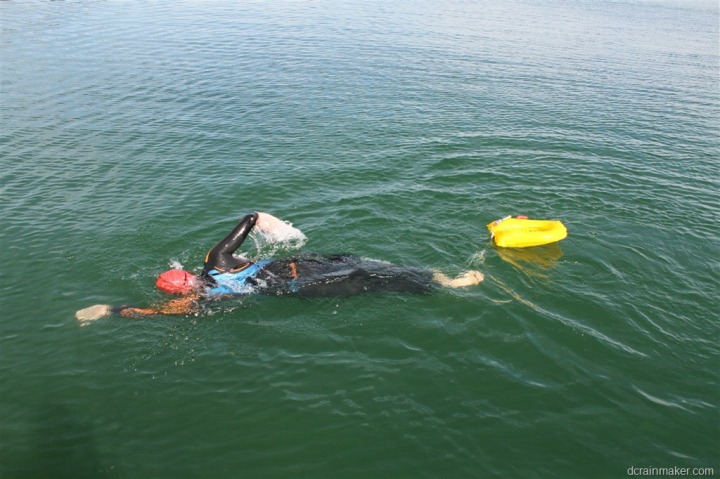
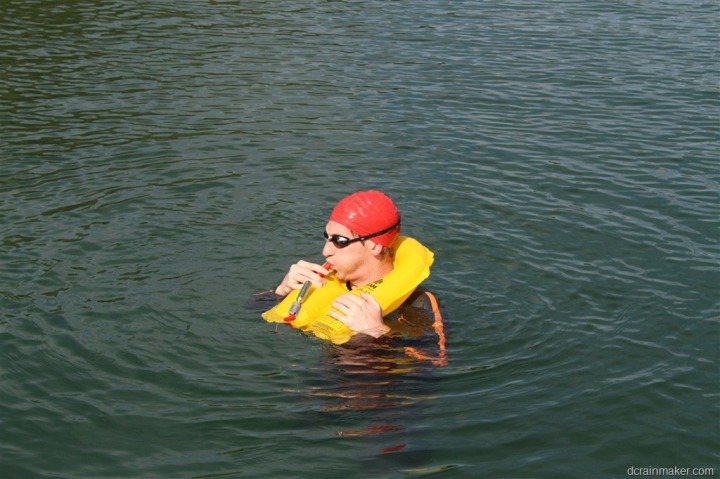
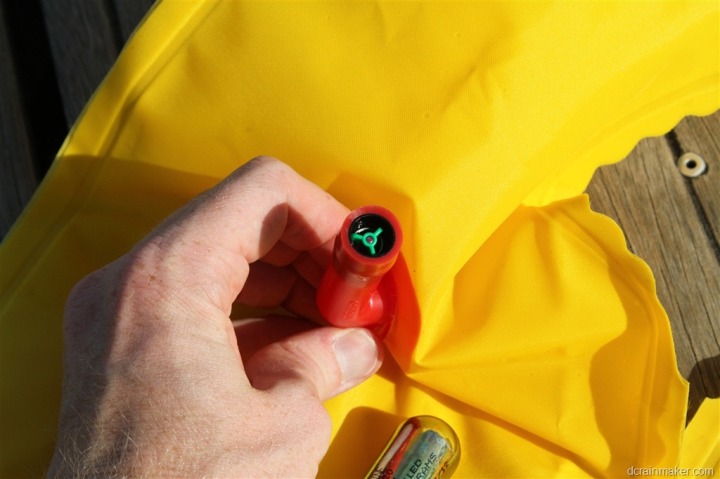

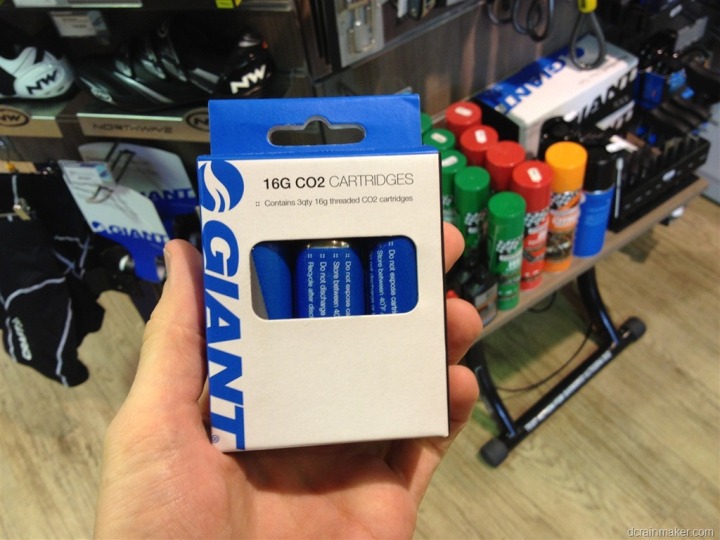

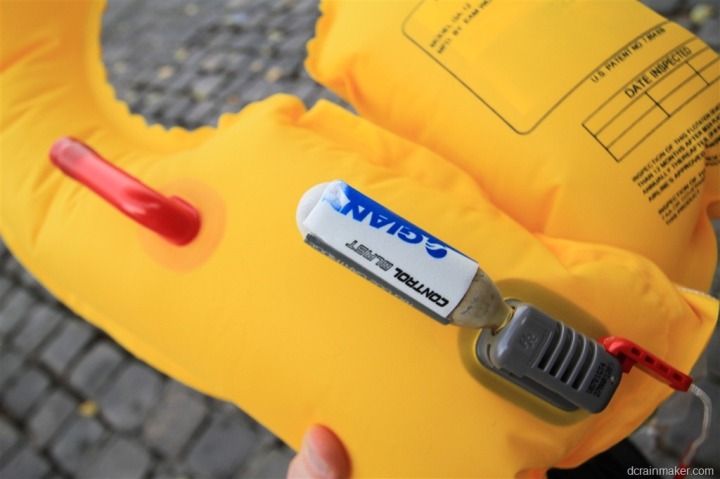
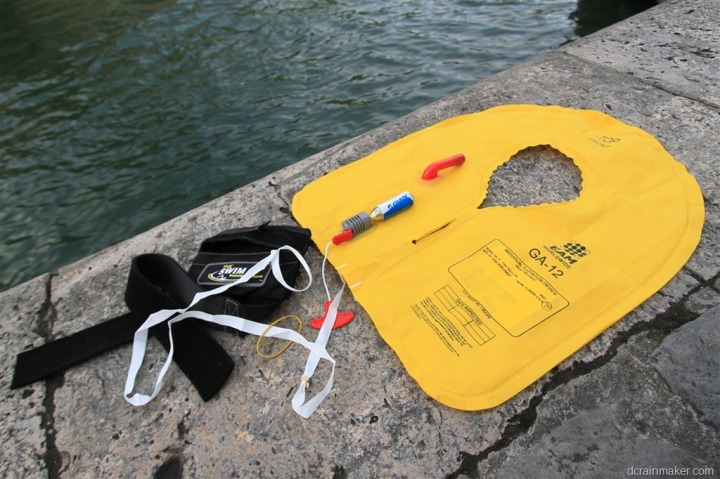
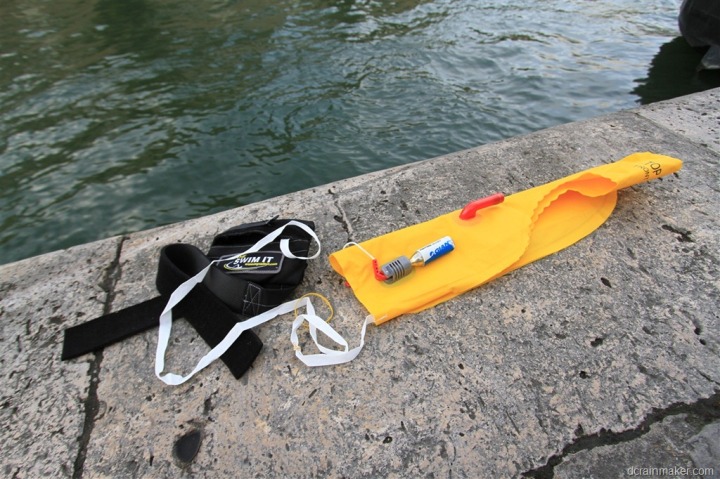

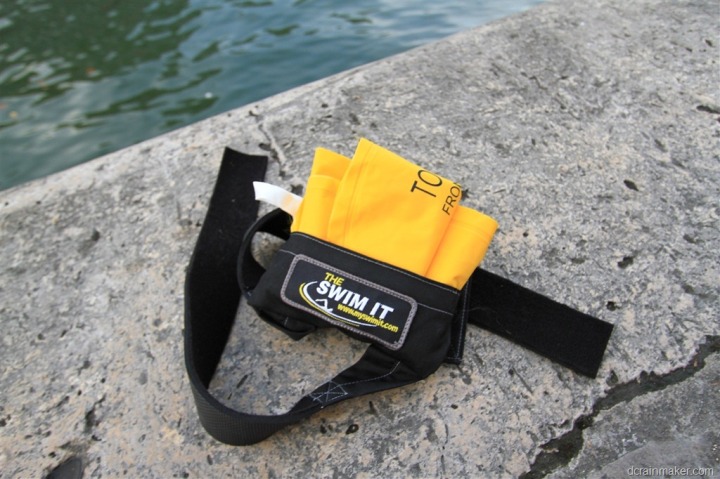
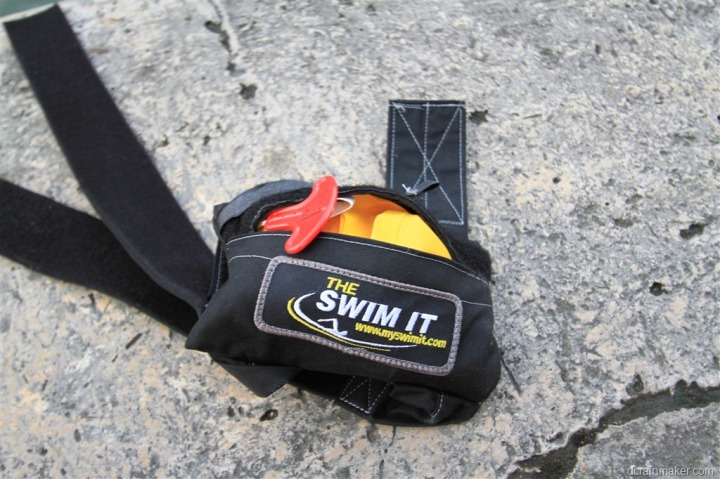

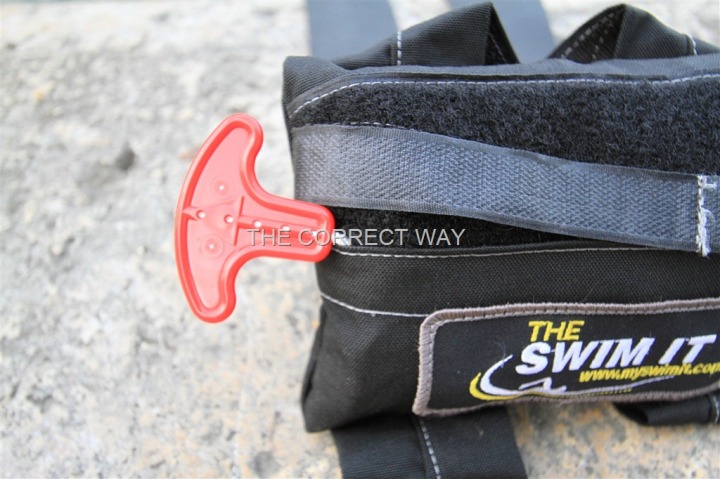
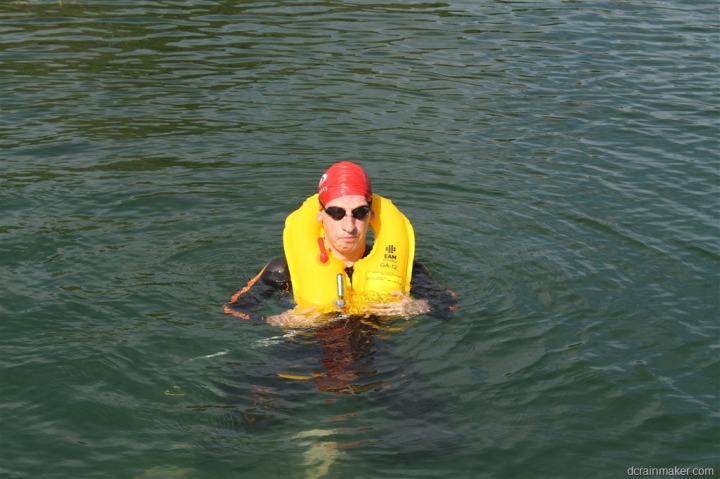

















Reading good blogs like this also one of the key factor to save our lives. By the end of the day it is our awareness and knowledge about these devices and other things we might need and the proper training to react together with this equipment saves us.
Any reason not to wear it on the front of your thigh? Seems like it would be even less likely to be triggered accidentally if the handle was positioned on your front near your crotch.
Beyond drag, no, I don’t think there’s any issues. I suspect by placing it on the back, you reduce drag since it’s slightly behind your butt.
Again, all minimal in the grand scheme of things, and I agree, it would likely reduce accidental triggering.
What’s the scale of your rating?
C+ means what?
Typical grade-school rating system – F to A.
link to en.wikipedia.org
In other words, it’s passing, but not excellent.
Any chance you might review the SwimSafe:
link to triaids.com
Who were you referring to when you said ‘certain people’?
Why wouldn’t it be suited for openwater swim training? What if you get a panic attack when a curious (big) fish swims right infront of your vision for example, then the Swim It could be damn useful?
No, I said it’s not a “replacement for for openwater swim training”. Meaning, that you shouldn’t go into a triahtlon without previously doing openwater swims and being comfortable in the water (it happens every race). And you shouldn’t be going into an Ironman triathlon with 2,000+ concurrent swimmers without first being comfortable in a typical triathlon swim start (I also hear of this more frequently that I’d expect).
But training is more than just feeling comfortable in openwater, it’s also about important details such as ensuring you have a proper warm-up pre-race. There’s considerable mounting evidence that a proper warm-up could be key to preventing swim deaths.
As far as big fish – there’s mixed evidence as to whether or not big fish like bright colors. :)
If you were wearing it without a wetsuit – would you imagine any chafing/rubbing on the inner thigh? Of course would depend on your kicking technique, but….
It probably would is my guess, at least initially. Like most chaffing issues, if you start with smaller durations and increase, you can usually avoid them.
It’s not the case that if you know one fish, you know them all.
For example, there are fish species that have big eyes, pike for example. This implies that they hunt primary relying on their vision.
Then there are also catfish species, they have tiny eyes, you can find them most often in muddy water where you can’t rely on vision. Catfish rely on primarily on their side-line organ, an organ that can detect vibrations in the surrounding water. This results in the fact that catfish will act curious to disturbance in the water and may come very close. There are actually a few fishing methods that rely on the art of causing disturbance in the water.
Not that it’s really that relevant to the Swim It, but just wanted it to be said.
I’m going to buy it in a couple of months and see how well the deployment goes on my end. Thanks for your review Rainmaker.
Ray, when you thread a new cartridge onto the swimit, how long is it effective for (assuming the rip-cord is pulled). Example, if I thread a cartridge on today, will I need to replace it within 2 months?
Great review andfully agree you have to test it,
I bought mine 3 month ago and had the same problem pulluing the the red nob was on the wrong side..
Anyway i agrre with C+,
I bought mine actually not for races but for openwater trainings where i am sometimes alone and this would hlp me to be moree secure if you are in the middle of a lake.
correction to my question post
Ray, when you thread a new cartridge onto the swimit, how long is it effective for (assuming the rip-cord is NEVER pulled). Example, if I thread a cartridge on today, will I need to replace it within 2 months?
This product is probably dangerous since it could inspire confidence in a weak swimmer to take chances based on the false assurance that they could activate it to save their life. It is kind of sinister since it plays on the public’s common perception of drowning, which have absolutely nothing to do with reality.
Scientifically speaking, there is an “Instinctive Drowning Response” programmed into all humans.
Drowning people cannot wave for help or use their arms for tasks such as pulling the red handled release on this product. Nature instinctively forces them to extend their arms laterally and press down on the water’s surface. Pressing down on the surface of the water, permits drowning people to leverage their bodies so they can lift their mouths out of the water to breathe.
Throughout the Instinctive Drowning Response, drowning people cannot voluntarily control their arm movements. Physiologically, drowning people who are struggling on the surface of the water cannot stop drowning and perform voluntary movements such as waving for help, moving toward a rescuer, or reaching out for a piece of rescue equipment.
From beginning to end of the Instinctive Drowning Response people’s bodies remain upright in the water, with no evidence of a supporting kick. Unless rescued by a trained lifeguard, these drowning people can only struggle on the surface of the water from 20 to 60 seconds before submersion occurs.
Source: Coast Guard Magazine link to tinyurl.com
Ideally you’d want to activate this device prior to the instinctive drowning response beginning. i.e. You realise you are in trouble, then instead of panicking (which, in water, if a rescue doesn’t intervene, usually results in death) you pull the cord and essentially ‘self rescue’
The key is that you have to be trained, or train yourself to both respond in that constructive way, and correctly operate the rescue device.
Perhaps this is true for people that can’t swim, but for experienced swimmers I can see them having the ability to pull the cord in a bad spot. I can certainly think of times I would have benefited from it.
Giant store on Bd Henry IV?!
Hi Mark-
RE: CO2
Indeed, makes it a pain to travel with to races (just like with CO2 for bike repair bags).
Hi Abe-
RE: Fish
I was referring to the one fish that matters: Sharky. :)
Hi Anon-
RE: New cartridge
I assume forever, since the seal isn’t broken until you actually pop the cord. Since the unit comes preloaded and doesn’t have any definition on timelines, I think it’s safe to say it can sit for the length of a normal CO2 cartridge (no idea what that is…years or more I’d assume).
Hi Marc-
RE: Thoughts
Thanks for the note, and your first hand comments.
Hi Anon-
RE: Inspire dangerous confidence
The only question is whether or not the drowning response is actually applicable here. Most folks that die during a triathlon/endurance swim event don’t actually down per se. Instead, they have cardiac events that causes death. In most (recent) cases I’ve seen, the person doesn’t actually go under as usually someone is there quickly enough. The challenge is that it’s often too little to late in those cases (again, from a cardiac standpoint).
But definitely some good points there.
Hi Charlie-
RE: Store
Yup indeed! A quick 3-5 minute bike ride away!
I just bought and tried the swimIT.
I cannot comment on the deployment of the PFD, I have not tried that.
I can speak to the perceived drag of the unit. I experienced no discernible increased drag. I couldn’t really even feel it back there. I have been swimming open water for about 5 years in Lake Lanier in Georgia (2 – 3 times per week from MAY – SEP; 1mi – 2.5mi distances).
For me, the swimIT is an ADDED level of safety, in case I get a cramp or something else goes wrong. Even though I rarely swim alone, I find it difficult to hear and communicate with swim partners. I do not perceive the swimIT as a reason to be able to just cut loose in the open water. I do value the additional level of safety which it advertises, and hopefully never has to deliver…
Hi DCRainmaker, this is the most thorough product review of my company’s product, the Swim IT! Well done; however, I need to clarify some observations you and your readers have made.
First the easy stuff:
1. Homeland Security’s TSA has approved the Swim IT (including CO2) to be carried through security checkpoints. Follow the TSA link and scroll to the bottom of “Prohibited Items” and you will see two big green OKs for checked baggage and CARRY ON under the heading “& Other Dangerous Goods-small compressed gas cartridges”. link to tsa.gov
2. The “safety strap” over the red Jerk to inflate tab is designed to eliminate any chance of accidental deployment. Not 1% chance, but any chance of accidental deployment. As you noted, you couldn’t deploy the Swim IT with the velcro Safety Tab securing the red Jerk to inflate handle. This safety tab is recommended only for those individuals that are concerned about a possible accidental deployment (which has never happened); however, if used to secure the Jerk tab, then there is an added step to remove the safety before deploying.
3. The yellow lifejacket is visible to rescue – IT sticks out like a sore thumb! If you are lucky enough to be wearing a Swim IT in a USAT or WTC event when calamity strikes, water rescue has been trained to respond to the yellow life jacket! It is much, much more visible than current USAT emergency procedures of waving arms and pumping fist.
4. The Swim IT does not chafe. With or without a wetsuit, it simply does not chafe. I am a triathlete and was very conscious of this possibility when developing the product. When worn correctly, as you demonstrated in your photos, the soft legstraps are non abrasive. Additionally, proper wear does not provide any noticeable drag. World class endurance swimmer John Muenzer has stated, “you just don’t know it’s there. But, in the back of your mind you know it IS there if you need it.”
(continued on next comment)….
Ok, now the main event. Why is the life jacket difficult to pull over your head? And, what good is a Swim IT during a cardiac event?
The inflated life jacket is difficult to pull over your head by design. That makes it equally difficult to become separated from your life jacket if you decide to let go of it for any reason after donning it. As you observed, just one practice deployment is needed to calibrate yourself to the procedure.
The biggest objection to wearing the Swim IT is the perceived notion that a cardiac event is not survivable, or at least, “fate” is driving the bus and I can’t do anything to help myself, so why bother. According to Dr. Larry Creswell, Charirman, USAT Medical Review Panel, “During the swim portion of a race, be vigilant. At the very first sign of distress (which might manifest with chest pain, shortness of breath, coughing, unexplained fatigue or weakness, lightheadedness), immediately STOP and seek help. Your life could well depend upon receiving assistance.” Here is the link if you would like to read his entire story about cardiac events during the swim leg of a triathlon. link to endurancecorner.com
The key point is that you can be symptomatic and mitigate the risk of suffering a fatal swim. And that Sudden Cardiac Arrest isn’t always sudden! If you drop dead during the swim, without warning, then “fate” is driving the bus, but if you have symptoms and are wearing a Swim IT, then you can deploy your life vest, STOP and seek help. The alternative is to continue exerting yourself by swimming into a full blown cardiac arrest. Without a swimmable inflatable device like the Swim IT, you are condemned to fight against drowning while trying to signal for help. If you are fortunate enough to suffer the cardiac event at a USAT race and not a training swim, then you will have immediate access to the best water rescue possible and immediate medical attention. None of this is a guarantee of a non-fatal outcome to a tragic swim, but it is giving yourself the best opportunity to survive. As you noted, “there is likely some portion of triathlon death that can be prevented (by wearing a Swim IT).” The life you save may be your own, and I think that is enough reason to give it an A+!
Train like you race, in the open water!
Thanks, Rick
President, The Swim IT
Great review Ray – just would like to say I actually own and use a Swim It for training swims. As I only have the option of ocean swims I did not want to rely solely on my wetsuit to keep me afloat as there is nothing inherent in a wetsuit to keep your face out of the water whereas the Swim It will allow you to do this with ease.
@SwimIT “The inflated life jacket is difficult to pull over your head by design. That makes it equally difficult to become separated from your life jacket if you decide to let go of it for any reason after donning it. As you observed, just one practice deployment is needed to calibrate yourself to the procedure.”
If you agree that it needs at least one test deployment then why don’t you include a second co2 and 1 free repack? Also what are you doing to solve the theater issues that ray experienced making it difficult to get it to his head?
Thanks for doing a thorough review on this. It was certainly something I needed more information about. Thanks so much!
Hello,
I was wondering if the Swim It is officialy approved for Triathlon events in France ?
Thanks
Hello Ray,
I was wondering if the Swim It is officialy approved for Triathlon events in France ?
Thanks
I reached out to them this morning, they were pretty quick to respond:
“That’s a great question. The short answer is the only governing bodies that have officially approved the Swim IT for use is USA Triathlon and WTC Ironman; however, I know that I have shipped Swim ITs to users who have successfully competed in events outside the US while wearing the Swim IT (including Europe, Asia, the UK, South Africa and Australia).
I contacted the WTC swim director prior to competing in IM Canada and asked him about using the Swim IT outside the US. He responded that as long as the race was complying with WTC rules, the Swim IT would be legal to wear. WTC also recognized that every Race Director is the ultimate approving authority. After contacting the IMCA Race Director, the IMCA Race Director confirmed the “race legal” status with WTC and the Swim IT was “officially” approved for use in Canada under WTC rules. Confirming the legality of use of the Swim IT was not necessary, but I did it anyway just to make sure. I have repeated this process for races in Mexico, Central and South America and have always received approval for use.
Those are the only two governing bodies that I have petition for approval and both approved it’s use, because the Swim IT is a non buoyant device (prior to inflation) and did not assist the swimmer or render an unfair advantage.”
They noted that if there’s specific races and/or governing bodies, to let them know and they’ll be happy to follow-up and try and make it happen.
I think the concept of this product is fantastic. It’s not designed for non swimmers – nor is it marketed to them. It’s marketed to people who swim in open water who may need to self rescue. That said, outside of the cardiac events – most open water swimmers or triathletes – would only need to self rescue in cases of a severe leg cramping, sudden exhaustion, charley horse in thigh, or if their shoulder threw out – all excellent reasons to use this product. Wether or not it would go over the head easily being an issue – well yes – but if you’ve ever run into a snag swimming – anything that would float – over your head or not – adds to your safety as long as you are hanging onto it for support.
I do think the design is a bit flawed – and there is prolly a better way to attach it to your body – than wrapping it around your leg – and am confident this current design will be upgraded as soon as a little more thought is put into it.
In terms of body location design. The military straps entire life rafts to swimmers legs in a similar fashion. There isn’t really a better way that doesn’t interfere with swimming unless you go to a drag line.
Thanks for another outstanding review. Can you please help with two more questions?
1) Does the Swim It stay put. Specifically did it creep down your leg during long swims (with a wetsuit and without a wetsuit)?
2) Do you expect difficulty in removing it (non-activated) that will significantly effect your T1 time?
Thank you – Mak
No issues with it creeping down leg, it just stays put. At least on a wetsuit. I didn’t wear it too much non-wetsuit however.
No issues in removing it, though ultimately it will no doubt impact your T1 time a couple seconds (but certainly not significantly).
You did an excellent review of the product. You wisely I D’ed the factors that may impede its success…factors that really are not related to the product.
With a population of fisherman, navy seals and Coast guardsman equipped with ships, c 130s , and helicopters Kodiak is the Mecca for survival/rescue study and execution. These guys are extremely confident that if the victim carries out THREE STEPS they will be able to pluck your disparate soul out of the ocean in horrific conditions….at night…in a snowstorm…low on fuel.
These THREE STEPS also apply in a crowded triathlon, in a flat calm lake, on a sunny day. Without a device such as this the athlete has no way to participate in his own rescue and leaves his life in the hands of someone spacing out on a surf board.
Those steps are…..
1. Recognition…….Recognize you have a problem, EARLY! Failure to realize you are getting into trouble is usually amplified by machoism (I got this) , pride (this is embarrassing) denial (these chest pains are not really happening). Cock pit recorders often document that precise moment of recognition or situational clarity, which is always followed by the words… OH SHIT! Late recognition often impedes the victims ability to execute the remaining two essential steps. QUICK RECOGNITION is huge. When you smell smoke in your house call the fire dept. then go hunt the source or better yet, John Wayne ….just get out of the house.
2. Signal….. Letting it be known that we have a problem Houston! Providing location and attracting attention. The deployment of the yellow jacket works excellent in this application.
3. Shelter… Shelter buys the rescuer time to execute a save. In a Alaska it may be a survival suit or life raft. In this case it is the flotation device that is sheltering you from that oxygen deprived environment that lurks at the bottom of the lake you are racing in.
Ironically you give the device a C plus which I understand your logic. But what really is preventing an A plus rescue is the victims inability (physically or mentally incapacitated) to activate the process, which is a real issue. However a swimmer that has equipped himself with the device AND has been educated /trained in the steps above is much more likely to activate early and participate in his own rescue.
This lesson was bought to you by men and woman of the United States Coast Guard (I am not one of them) who are assigned to Air Station Kodiak. They know their stuff, use wisely .
Thank you so much for posting this information about Swimit. I am not a strong swimmer and plan on vacationing in an over-the-water bungalow, so I am researching devices that may help me feel more secure. This blog post gave me all the details I need to make an informed decisions and purchase. Thank you once again!
Thank you for your review of the Swim It. I purchased the product because I have had sporadic incidents of swimming induced pulmonary edema. Having the device allows a peace of mind. I may not be able to finish a race but I will live to try again. It doesn’t create extra drag, very little added time in T1 and I have no difficulty putting it over my head. I’ve never had to use it but I have practiced a few times in a few different situations. The only bad thing I have to say about it is that I find it very cumbersome to repack. The video on the SwimIt site goes too fast and I found your screen shots to be a helpful tool.
Ray, thanks for the great review. I’ve just received my Swim it in the post and there’s a noticeable bulge which looks like the cylinder on the inner side of the device. So, when wearing it, thus would dig in. This seems a bit odd to me. I would expect the inner side to be relatively flat. Is this normal do you think? Cheers, Ben
That honestly sounds like something was packed weird.
Its 2021 and I just came across your article. Unfortunately the Swim It seems to have been discontinued. Do you have any recommendations for alternative products? I do open water swimming on my own and would really like the piece of mind of something like this. Unfortunately there does not seem to be many options. It would be great if someone made a swimming buoy that could turn into a life jacket in an emergency.
Indeed, The Swim It is truly discontinued. Here in Europe, Restube is still available. Restube is not as capable a safety device (tube instead of life jacket) but it’s smaller, lighter and less expensive. In calm water (lakes), a tube is a lot better than nothing if a swimmer is struggling (cramp, heart, nausea).
Frankly, if you are swimming on your own (a big no-no according to Canadian camper training: always swim with a buddy) which is part of the reality of adult long distance swimming, having some kind of inflatable rescue device with you makes a lot of sense.
Thanks for the reviews of swim safety devices:
link to dcrainmaker.com
link to dcrainmaker.com
and this one:
link to dcrainmaker.com
Your reviews helped me better judge and test the Restube with which I now swim regularly (one can use alternative 16g c02 tubes which are far less expensive).
Swimit is definitely a must have if you’re a beginner tri athlete and need the reassurance of safety. It definitely is higher than a c+. It’s b+ and A for beginners. it’s purpose is for the newbies and those that are not as confident in open water.I’ve used it multiple times never had it go off accidentally. Someone would literally have to grab the handle and tug on it!